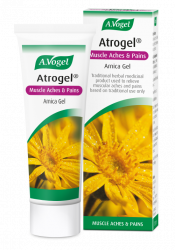Could you have tight hip flexors?
Lower back pain and tight hip flexors are often related to muscular imbalance. The hip flexors are a group of five muscles that connect the femur to the pelvis and they play a huge role in the way that we walk. Usually, we only really become aware of how important they actually are when they begin to tighten and cause mobility issues. This happens as a result of shortening of the muscle which reduces the range of motion at which they usually operate at.
Reduced mobility often leads to, or is caused by, reduced use of the hip flexors which then causes an increased strain on your hip joint. This can also compromise other nearby joints, such as the knees and lumbar spine, which try to overcompensate.
So what causes our hip flexors to tighten up? Sedentary lifestyles and too much sitting means that your hip flexors are constantly flexed and use the minimum amount of energy. Over time, this constant state of contraction assists in the shortening of the hip flexor muscles.
How are the hip flexors related to back pain?
The health of your lumbar spine (the lower spine) is directly affected by the action of the hip flexors and hamstrings. When the hamstrings are too tight they can prevent the pelvis from tilting forwards correctly. As a result you will most likely bend from the back rather than the hips to compensate for the lack of flexibility.
The psoas major attaches from the femur to your lumbar vertebrae. This allows this muscle to flex the hip joint upon contraction thereby raising your lower legs. When standing, there is a pull on the lumbar vertebrae, resulting in discomfort due to an over-arched lower back. This becomes more evident if you were to lie flat on the floor and observe whether or not your lower back arched or lifted off of the floor.

The hip flexors consist of the iliopsoas, rectus femoris, sartorius, tensor fasciae latae, pectineus, gracilis, adductors and gluteal muscles. It is the iliopsoas muscle which has the strongest pull on our spine. A tight psoas (the part of the iliopsoas that connects to the lumbar spine) can pull on the spine and compress the discs and vertebral joints associated. If the psoas is always tight it increases the amount of compression and pain in the back, so stretching and strengthening this muscle is essential to back health.
Poor posture and tight hip flexors
Many people associate poor posture with hunching at the upper regions of the spine but actually poor posture can originate at the lower spine at the hips. If you have an anterior pelvic tilt you’ll have less muscle strength in your core all the way down to your feet.
When the pelvis is pulled out of alignment in this way the lower back suffers as a result of added pressure and weakened tummy muscles. An anterior pelvic tilt pushes the pelvis forwards causing your chest to come forward and your butt to push backwards. Not only is this type of position more likely to cause more back pain but it also affects your posture.
Exercises to stretch and strengthen tight hip flexors and prevent lower back pain
This is the easiest way to release any tightness in the hip flexors; stretching will help to lengthen the muscles whilst strength-building will help them to support the rest of the body. Check out our easy videos below for a couple of exercises that you can try that will directly target the hip flexors. We love to move and encourage others to move too here at A.Vogel so why not check out our Get Active Hub? Here we share lots of handy tips and tricks on how to exercise, more easy-to-follow videos as well as some info on exercise recovery and nutrition.
Butterfly pose
1) Sit on the floor with your spine straight and abdomen engaged. (If you struggle to sit with a straight spine try sitting with your back against a wall.)
2) Bring the soles of your feet together and gently let your knees fall out to the side. It doesn’t matter if your knees don’t hit the ground, just let them fall out until you feel a gentle stretch. For some extra support try adding a pillow underneath each knee.
3) Inhale and as you exhale see if you can reach your knees a little closer to the floor.
4) To come out of the pose exhale and gently use your hands to support lifting your knees back to centre.
Lunge
1) From a kneeling position bring your right foot forward and gently lean into the stretch. If you find the floor too hard on your knees try kneeling on a folded blanket or cushions.
2) Inhale and as you exhale see if you can feel your way a little bit deeper into the stretch.
Herbal remedies to relieve lower back pain
 Traditionally the herb Devil’s Claw was used in African folk medicine as a digestive tonic, to reduce fevers, and other inflammatory conditions. It was also used for the relief of painful joints. When it comes to muscle and joint pain our own Devil’s Claw tincture is still one of my favourite herbal remedies. Our Devil’s Claw remedy is organically grown in a specially created farm in the Kalahari Desert to protect the natural environment that this herb is grown in as well as to give you a tincture that is completely free from nasty chemicals.
Traditionally the herb Devil’s Claw was used in African folk medicine as a digestive tonic, to reduce fevers, and other inflammatory conditions. It was also used for the relief of painful joints. When it comes to muscle and joint pain our own Devil’s Claw tincture is still one of my favourite herbal remedies. Our Devil’s Claw remedy is organically grown in a specially created farm in the Kalahari Desert to protect the natural environment that this herb is grown in as well as to give you a tincture that is completely free from nasty chemicals.








